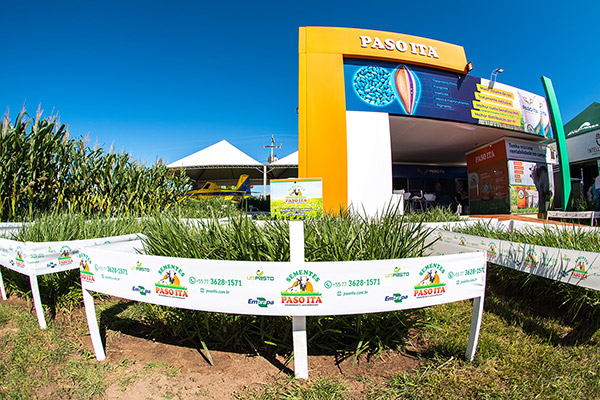
A perennial life cycle grass seed, with decumbent growth form.
Adapts very well to medium to low fertility grounds and requires annual precipitation of around 1000mm. It can also be used in higher fertility soils, due to its high responsiveness to chemical fertilization. However, there are other more productive species, recommended in these conditions.

Its very deep root system makes it very resistant to drought. Displays medium resistance to cold, good resistance to shade and low tolerance to flooded soils. Is highly susceptible to pasture leafhoppers.
It is recommended for direct grazing, hay and hay rolls, and intercrops greatly with Stylosanthes type Campo Grande, Callopogonium and Cajanus cajan (pigeon pea). Its use is not recommended for silage.
1) Broadcast
In the normal period, between October and February, the recommendation is 400 germination rate points per hectare. Then increase to 450-500 germination rate points.
2) In line
In the normal period, the recommendation is 300 germination rate points per hectare. Afterwards, increase to 400 germination rate points per hectare. In case of intercropping, reduce around quantity of grass seeds by around 20% to decrease competition between plants and favor the legumes.
Incorporate seeds with maximum depth of 4 cm. This incorporation can be done after seeds are distributed throughout the area using a closed leveling grid or with a compactor roller. Another optio1n is to combine both techniques, which, in general, presents superior results.
Its average production is an estimate 10 tons of dry matter per hectare per year, with 7 to 9% brute protein content in the dry matter, and 50 to 60% in vitro digestibility. Presents good palatability.
In the normal seeding period, it presents a formation time of around 90 days. First pasture can be done in this stage, 90 to 100 days after germination. In this moment, the plant is about 80 cm tall. Cattle must be removed when the plant reaches a height of around 30cm.
It can produce photosensitivity issues in the animals, caused by the Phithomyces chartarum fungus, if not handled properly. Therefore, it is recommended to not allow for excess of decomposing matter, for this favorable to the fungus that causes this problem. This situation can be avoided by maintaining pasture always in the recommended grazing heights, both in the entrance and the exit of cattle from the feedlots.
| Usage Grazing and hay |
Digestibility Good |
| Intercropping All legumes |
Palatability Good |
| Life cycle Perennial |
Altitude Over 2000 m |
| Drought tolerance High |
Annual precipitation Over 1000 mm |
| Leafhopper tolerance Low |
Growth habit Decumbent |
| Waterlogging tolerance Medium |
Germination 7 to 21 days |
| Tolerance to cold Medium |
Planting depth 1 to 3 cm |